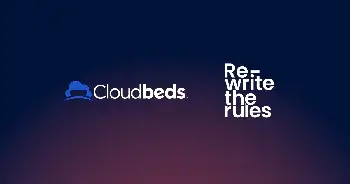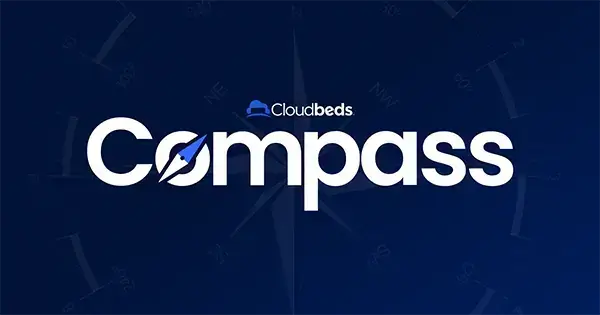Calculate your Property’s Occupancy Rate
Your Property’s Occupancy Rate is:
What is occupancy rate?
Occupancy rate is a term used to indicate how much of a space is rented out compared to how much total space is available. Hotel occupancy specifically refers to the number of rooms occupied in a hotel compared to the total number of available rooms. It typically applies to hotels and rental units, but it isn't exclusively used in the hospitality industry. It's also a term used for call centers and apartment complexes, for example, but this guide will focus on hotels. In the example of a hotel, the occupancy percentage refers to the number of occupied rooms compared to the total number of available rooms.
Hotel occupancy rates are calculated as a percentage, taking into account that the best-case scenario is to reach 100% occupancy. Yet, this doesn't tell the whole story. In this guide we'll explore exactly what occupancy rate is, how you can calculate it for your hotel, and how it fares against other key performance indicators. As a key metric, the occupancy rate can be considered alongside other metrics to evaluate the financial health of your business.
Occupancy rate formula: how and when to calculate a hotel’s occupancy rate?
As an important metric, it’s wise for hoteliers to keep track of their occupancy rate for effective property management. A low occupancy rate can flatline your financial health, so you need to know how to calculate and use occupancy rates. Knowing how to calculate occupancy percentage is crucial as it serves as a key performance indicator for optimizing pricing and operational efficiency.
Here is the occupancy rate formula you can use to work out how many available rooms you have in a given period:
Number of rooms occupied divided by total number of rooms multiplied by 100.
To give you an idea of what that calculation might look like in a real-world context, let’s take a look a the following example. Let’s start by assuming that your hotel has 50 rooms and you booked 15 of them last night:
15 / 50 x 100 = 30%
In this instance, the occupancy rate for your hotel is 30%. That’s considered a lower occupancy rate by many hotels’ standards. This figure lets you know that there’s room for improvement since you have more available rooms than occupied rooms. The occupancy rate shouldn’t be confused with the vacancy rate – a similar metric that provides different information. The vacancy rate is calculated using the following formula: Number of units available multiplied by 100 and divided by the total number of units.
Borrowing the example from earlier, if you have 15 rooms booked out of 50 in total, you’re left with 35 empty rooms. This information fed into the vacancy rate formula would look like this:
35 x 100 = 3500
3500 / 50 = 70
So now you know that your vacancy rate is 70%, while your occupancy rate is 30%. In an ideal world, you would want these figures to be reversed and have higher occupancy.
Average occupancy rate in the hotel industry
Calculating your occupancy rate is a good idea, but the percentage in isolation might not be so useful.
Why?
Because you won’t know how your numbers fare compared to other hotels in your area and the hotel industry at large.
If you have an average occupancy rate of 60% you might feel like there’s something you’re doing wrong,
but if the average occupancy rate of other hotels is 40%, you know you’re on track. Understanding the average hotel occupancy rate is crucial for analyzing performance trends and setting realistic business goals. Conversely, the average could be closer to 80%,
in which case you’ll know there’s work to do to close the gap.
As of September 2023,
STR the market leader in hotel industry data,
reported that the average occupancy rate for US based hotels is 66%. This can serve as a benchmark for hotel owners and real estate investors.
If your hotel is located outside of the US, it’s good to know the average occupancy rates in your region. Here’s what the data shows for the most recent occupancy rate figures from different continents:
Continent: Average Occupancy Rate (as of September 2023)
- Europe: 78%
- Asia: 64%
- Middle East & Africa: 67%
- North America: 66%
- South America: 56%
Why is the occupancy rate important?
Low occupancy rates don’t spell disaster, but they can be cause for concern. While the pandemic brought low demand, levels have returned and, in some cases, surpassed pre-pandemic levels. It’s crucial to understand your occupancy levels so you can make smart pricing decisions to help you increase profitability.
The occupancy rate is a barometer for success in that it lets you know how successful you’ve been in securing bookings. With time, you can put together data to identify trends such as low versus very high demand seasons, how various local events and promotions affect occupancy, and if your occupancy rate increases in tandem with your marketing campaigns. Implementing effective strategies can help increase occupancy and ensure higher room utilization.
While it won’t indicate how healthy your cash flow is, it can let you know when it’s time to take action and create new initiatives to boost your average daily rate (ADR).
If your occupancy rate is 30%, as in the example we used earlier, then you might need to adjust your pricing and social media marketing strategy or reduce operating costs to boost your bottom line. Given time, your business can recover from having a low occupancy rate, but you need to know it’s low to realize there’s a problem.
3 ways to achieve high occupancy rates
Maintaining a good occupancy rate is a great way to ensure you’re meeting your financial goals, so here are three ways to go about it:
- Alter your pricing strategy
- Adjust your stay restrictions
- Avoid overselling
In the hotel industry, pricing is everything. If you want to rent out real estate, you need to make it an attractive proposition for potential guests. Sure, complimentary breakfasts and apps for easy booking can help secure reservations, but to see an improvement in your overall occupancy rate you need to first consider your pricing model.
Dynamic pricing - This type of pricing strategy involves adjusting room prices according to local market conditions and competitor hotels in your area. For example, if there’s a local event bringing a lot of people in town, you could charge a higher average rate knowing that you’ll still fill your rooms.
Value-added pricing - With value-added pricing, you hike up your rates due to additional services you offer that your competitors don’t. For example, your hotel room rate is $50 because you offer free breakfast, toiletries, and other extras that the $30 hotel room listed by your competitor doesn’t.
Price per segment pricing - To incentivize guests to book with your hotel, you can offer lower rates for specified stay durations or the number of rooms booked.
To supercharge your revenue management strategy, a tool like Cloudbed’s Pricing Intelligence Engine can be invaluable. This tool provides you with valuable insights into your hotel’s financial performance, as well as allows you to set customizable rules and triggers so you’re alerted when there are pricing changes in your local market, either caused by competitors or an upcoming event.
The average length of stay in your hotel can affect your overall occupancy rate. If you have unoccupied rooms, one way to fill it would be to employ stay restrictions. For example, if you anticipate a lot of guests will stay at your hotel during a holiday weekend, you can impose a minimum length of stay of three-nights for that time period. This will ensure that you give priority to guests who want to stay through Sunday night instead of those who only planned to book a 1-2 room nights.
Overselling, or overbooking, is a tactic commonly used by large hotel chains in the hospitality industry to boost occupancy. The tactic is based on the presumption that there will be cancellations or no-shows. However, it can be a risky move, since you could end up in a situation where you have disgruntled would-be guests on your doorstep with no room to sleep in. For overselling to work, you have to be sure to have an overbooking strategy in place.
Occupancy rate and other hospitality KPIs
Occupancy rate alone won’t reveal everything about your hotel’s performance. However, when interpreted along with other hospitality KPIs like ADR and RevPAR, it can be a powerful tool for driving future success.
Occupancy rate and ADR
Your average daily rate (ADR) tells you a lot about your business, specifically how much money you’re bringing in, on average, per available room. Occupancy rate and ADR together can give you an idea of what needs to change. Understanding the occupancy percentage calculation is crucial for accurately assessing and improving your ADR.
If you have an occupancy rate of 40%, yet a healthy average daily rate, then the occupancy rate won’t be as much of a cause for concern. On the other hand, if your occupancy rate is high but your ADR is low, then you might have a problem even though you’re selling a lot of rooms.
Here’s the formula for calculating ADR:
Total revenue from rooms divided by total number of rooms sold.
Occupancy rate and RevPar
Unlike ADR which provides an average of what you could earn, revenue per available room (RevPAR) calculates the average amount of income generated from each room. Understanding your hotel occupancy rate is essential for accurately calculating and improving your RevPAR. As such, RevPAR is crucial for calculating your business’s financial health.
Here’s how you can work out your hotel’s RevPar:
ADR multiplied by the occupancy rate
Final thoughts
Working out the occupancy rate for your property could prove to be instrumental in making progress and bringing in more revenue. Once you know your occupancy rate, you can start to identify trends and act accordingly to build your business’s success.


















